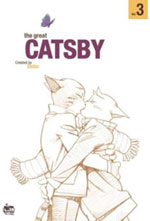Last class, we discussed the inclusion of Yi Sang's poetry in the Koreandrama "Goong". There were two polarized views about the incorporation of a"high culture" element into a "popular culture" medium. This week's reading from "High-Pop" ties in really nicely with the debate.
Intertextuality -derived from the Latin
intertexto, meaning to intermingle while weaving)
-the shaping of texts' meanings by other texts
-refers to an author’s borrowing and transformation of a prior text or to a reader’s referencing of one text in reading another
-the need for one text to be read in the light of its allusions to and differences from the content or structure of other texts
Support for intertextuality in “Goong”:-introducing good Korean lit
-cultural exchange
-object becomes part of circulation of culture
-adds to the richness and complexity of the work
Criticism of intertextuality in “Goong”:-artificially deep
-infidelity to original author and work
-ludicrousness and senselessness of incorporating “high art” in pop culture (Korean drama audience is looking for entertainment, not a literature lesson)
Before the reading Timothy Corrigan’s essay “Film, Fedelity and the Performance of Literature”, I stood on neutral ground and agreed with both sides of the argument with regards to the pros and cons of intertextuality. However, I am now convinced that intertextuality reaps many benefits; both for the work or art and the original source that is borrowed from.
Yi Sang's poetry appears in Goong as a “contemporary body, resurrected by and forcontemporary film culture". The goal of intertextuality: to enhance the meaning of the work and to elevate the drama above popular culture. It adds to the work, establishing it in a in wider context and garners a deeper sense of appreciation and understanding.
Furthermore, it helps to revive a “ghost of literature”. Corrigan argues that “the text and the book may be in the process of disappearing, drowning, or being irrevocably torn apart”. The producers may not necessarily be aiming to educate the viewers with Korean literature, but definitely exposing the audience to that [dying] genre of Korean art. The producers are “courting and claiming a massive youth market”; which are the next generation responsible for transcribing the works of the past into the future. Intertextuality helps works of the distant past stay meaningful in the present; if a poem written more than half a century ago can be used to enhance a modern day scene (ex. Yi Sang’s mirror), it further establishes the work as a literary gem and highlights the timelessness of the work.
Rebuttal for negative aspects of intertextuality:
Criticism #1: It is almost an insult to Yi Sang to include his “high art” poetry in trivial pop culture.àthe point is not whether this is a mocking triumph of pop culture over highculture. What counts here is not the line and its appropriation ofmisappropriation but rather who performs that line… and [the] ability torecall and reactivate itCriticism #2: Borrowing from some one else’s work is a violation against the integrity of original work
-textual integrity vs. popularity
-textual singularity and authority
-culture is all connected, no solid divisions
-cultural studies has worked in recent decades to pressurize and undermine the notion of the singularity of texts and their authors by dispersing both into the filed of popular culture or daily culture at large
--> fossilized sense of individuality, wider social circulation of work (that dissipates their traditional authority)
Criticism #3:
It is kind of pointless to include allusions to Yi Sang’s poetry because the majority of people will not be able to recognize that reference.-it isn’t a wasted effort if the audience is unable to catch the allusion. One may simply appreciate it for its aesthetic appeal.
-as visible fragments or invisible subtexts, the literary text appears in the film as, in its numerous positions, an interpretive grid to control the instability of images through the designating power of words
-power of film to “spectacularize” literature: from a 2D piece of writing to a 3D scene
-the developing technological powers of film to crate more convincing representations of reality and powers of film to create more convincing representations of reality and the social context of an implicitly addressed audience.
Final thoughts:-classic adaptations have become much less about textual fidelity and authority
-concentrates on the film and the audience’s ability “to perform” literature
-classic texts are ghosts, and film images are reminders of worlds that have vanished or never existed
How is intertextuality in Goong related to Hallyu?-producers are extremely cognizant about the globalization of film market
-thus, the Korean drama can be used as a vehicle to educate/expose the world to another aspect of Korean culture (in this case, Korean literature)
 1) The Great Catsby by Doha (NetComics)
1) The Great Catsby by Doha (NetComics)